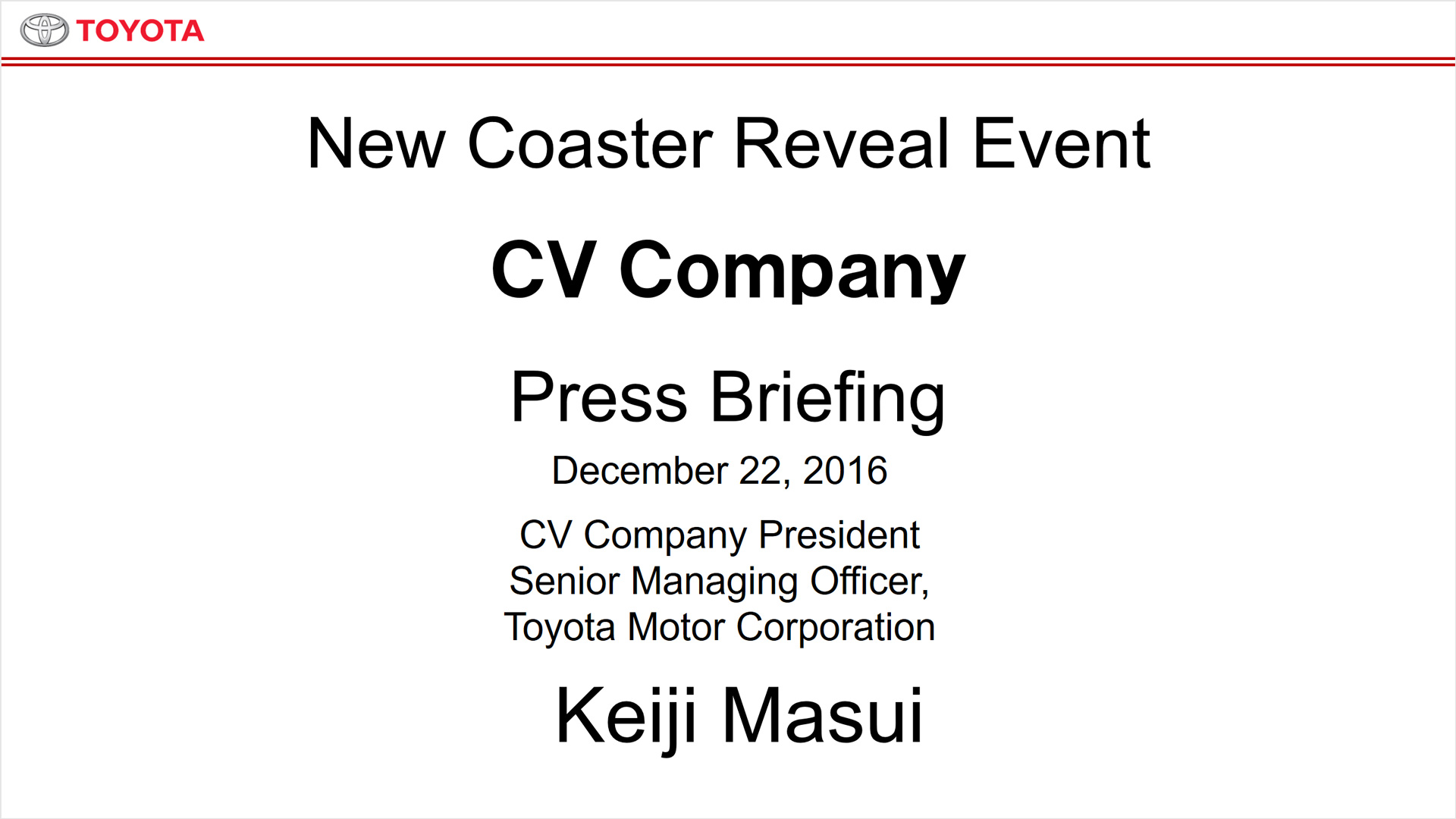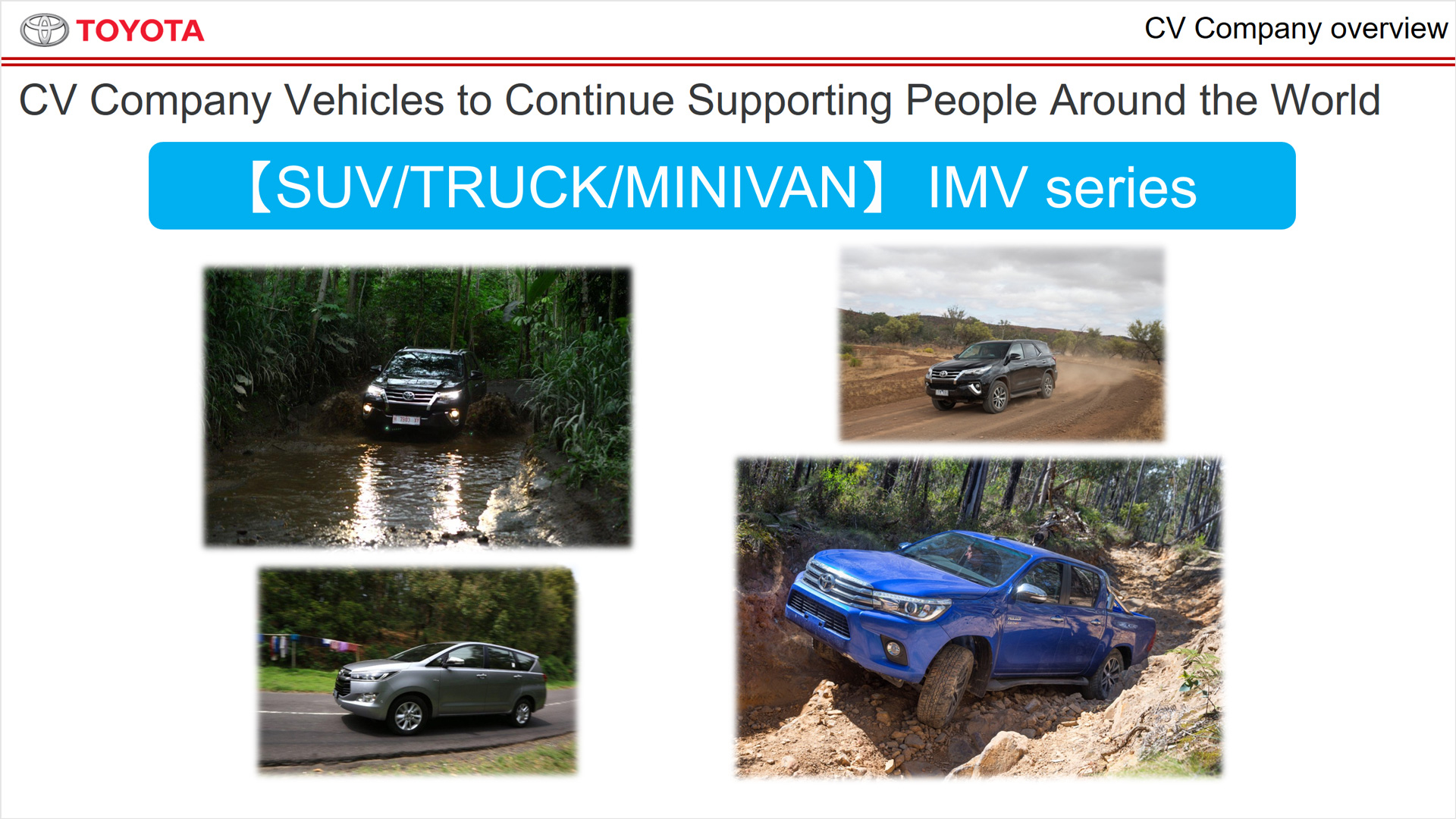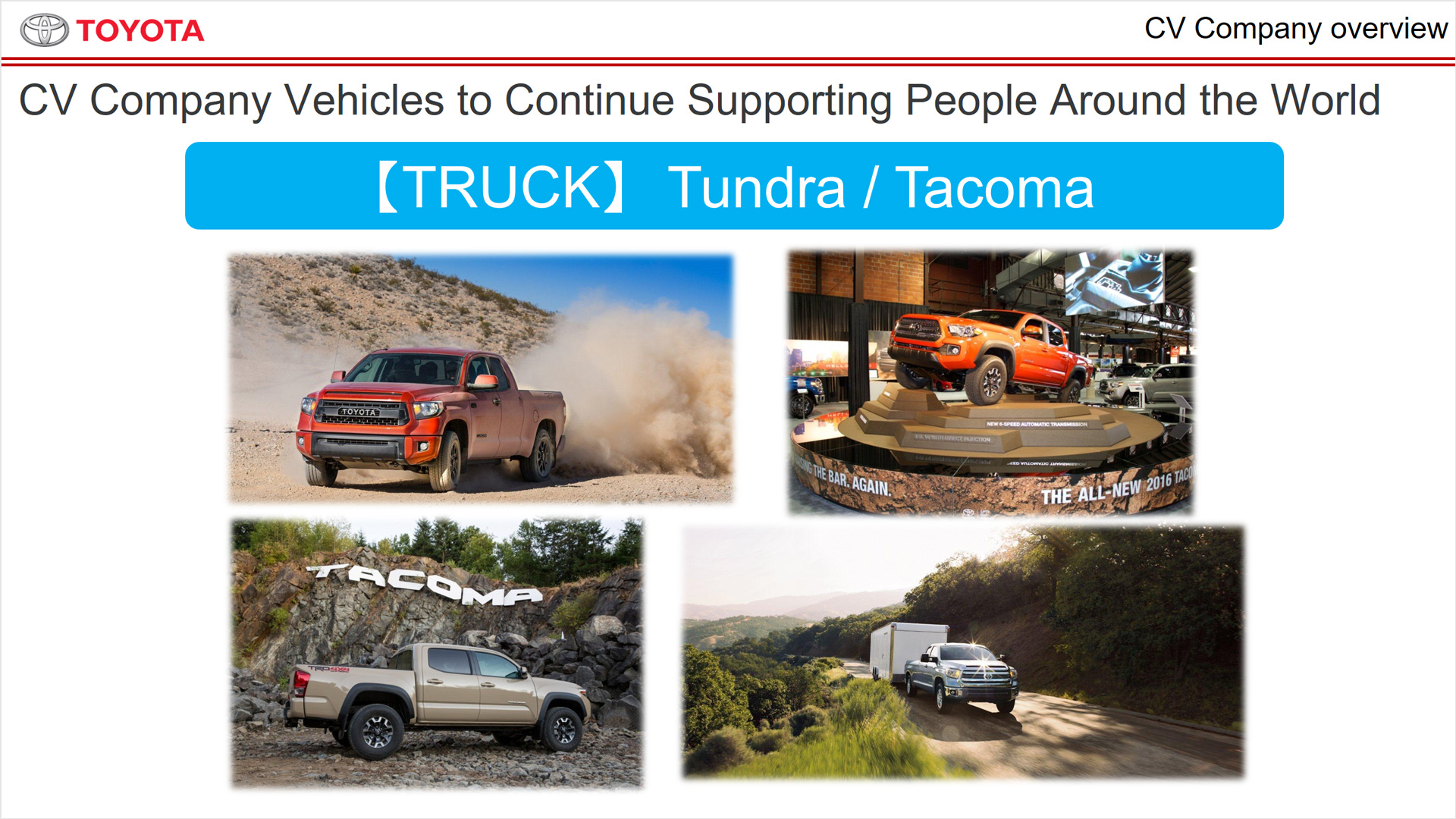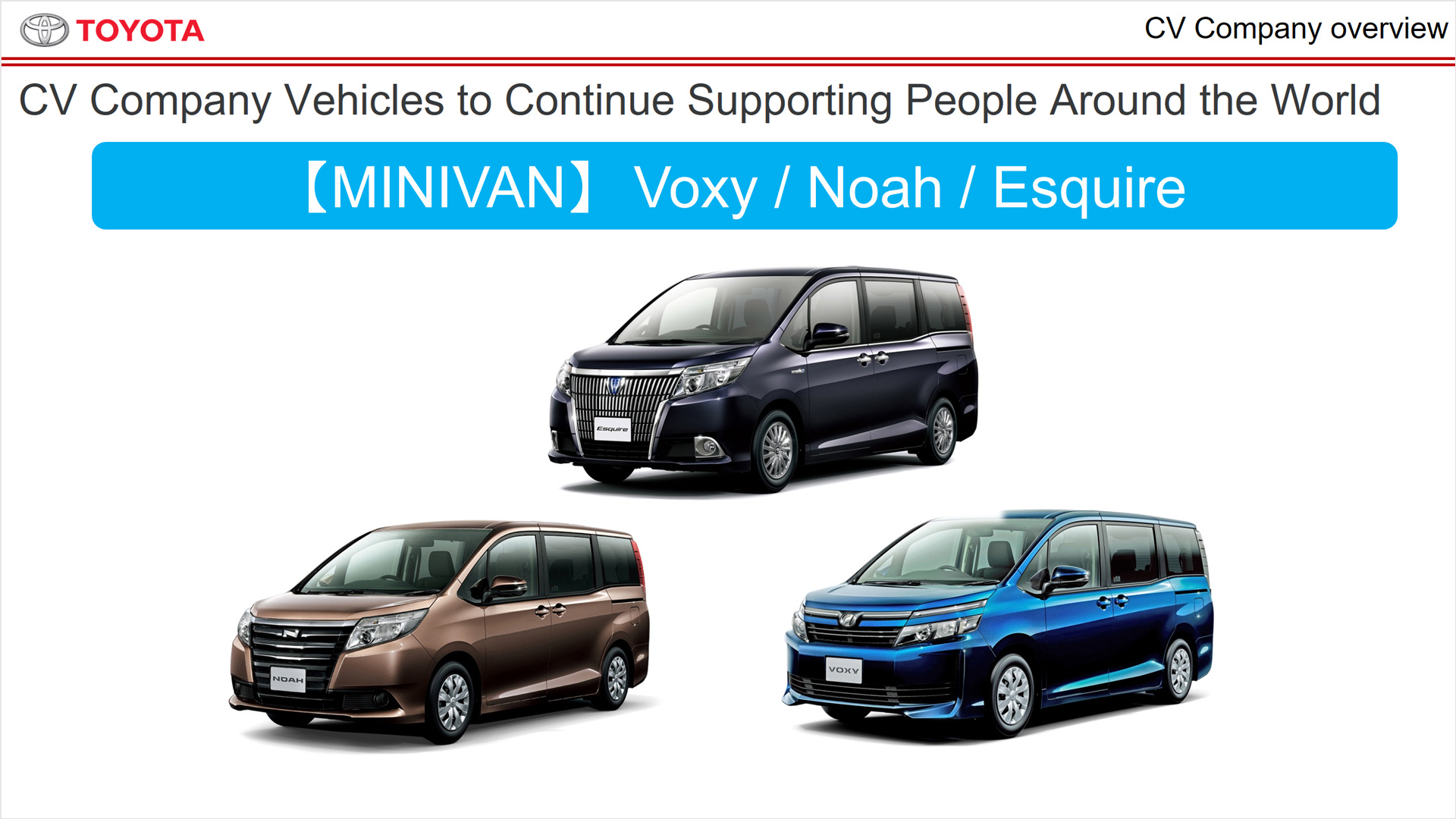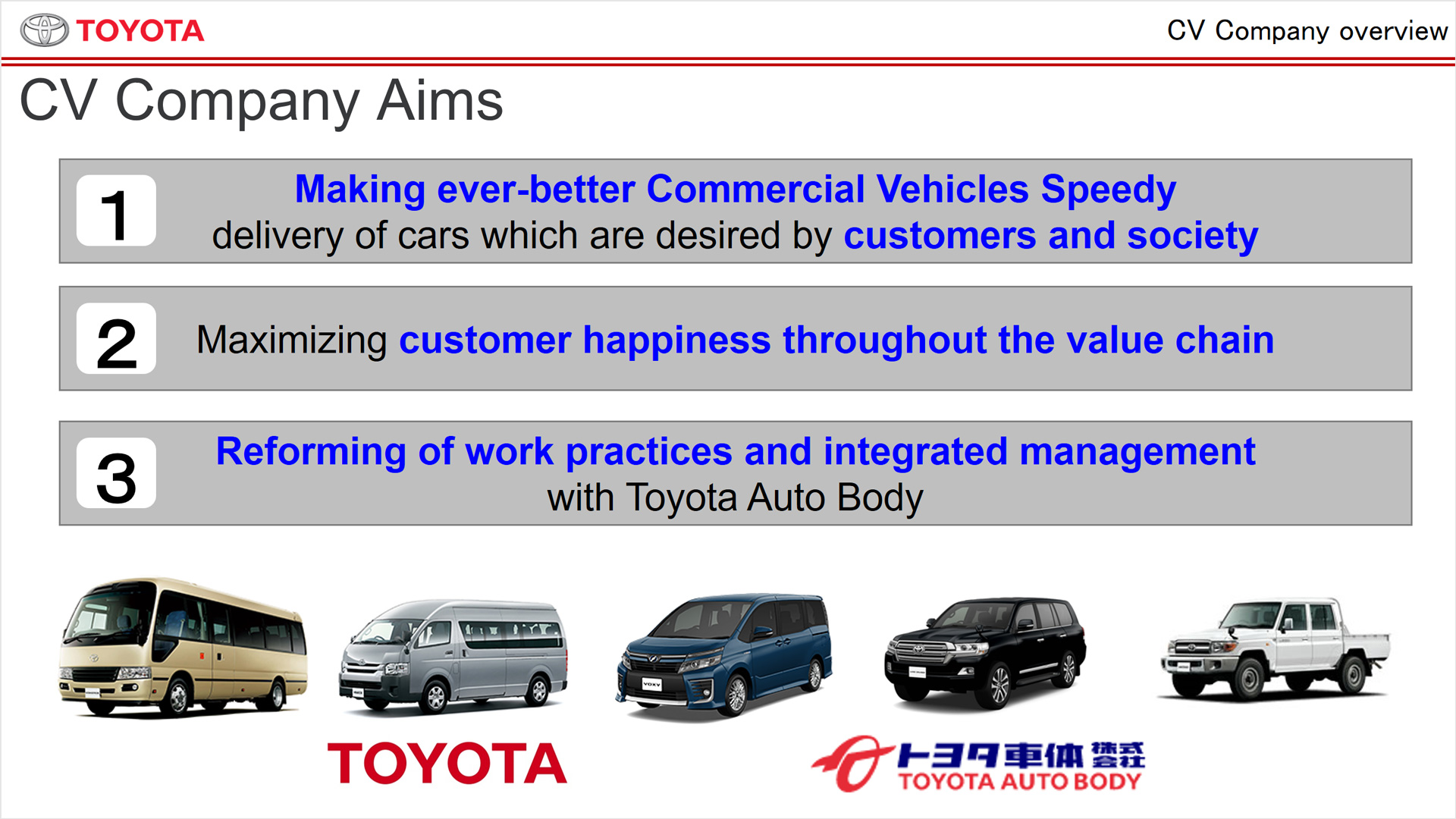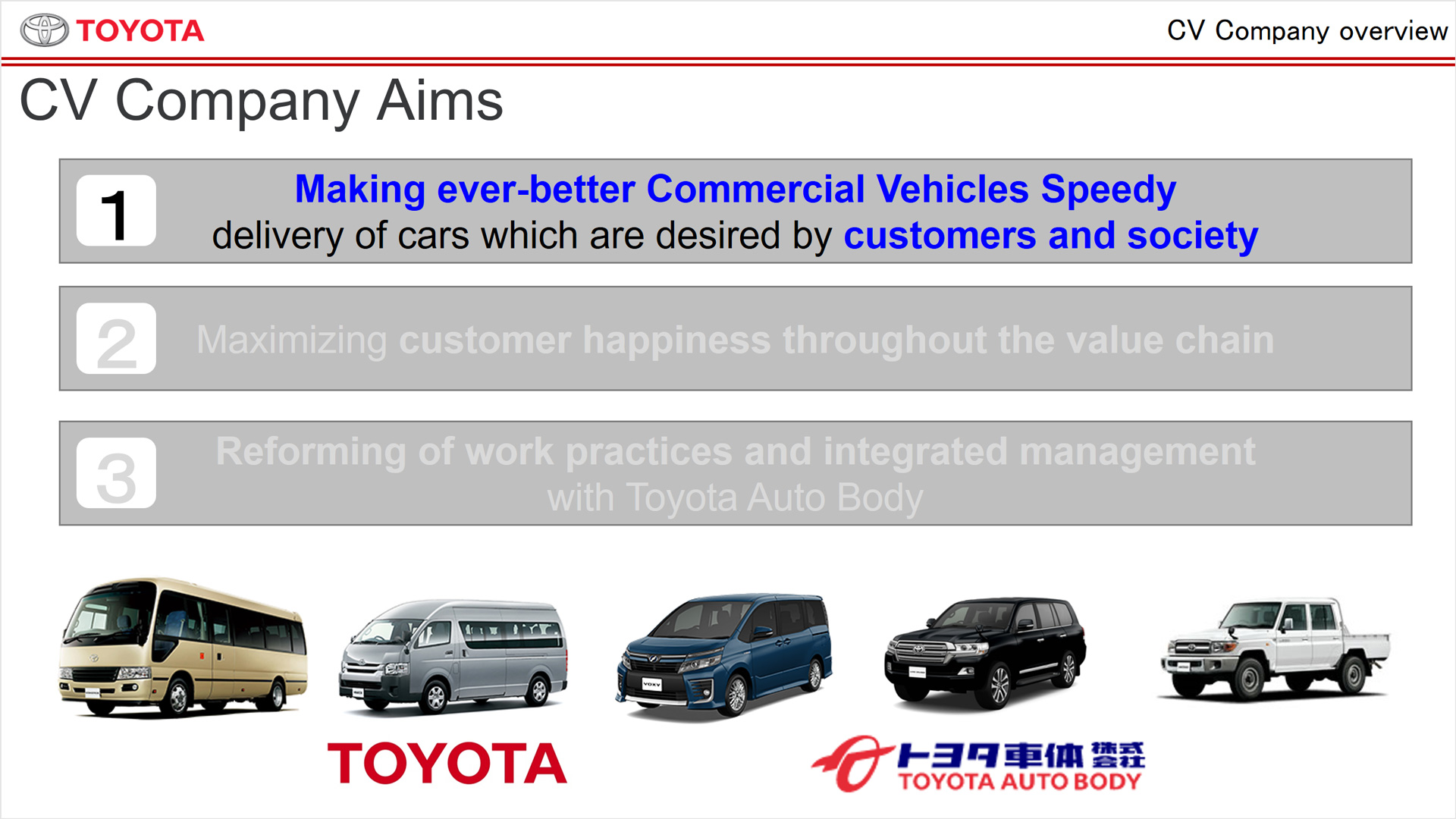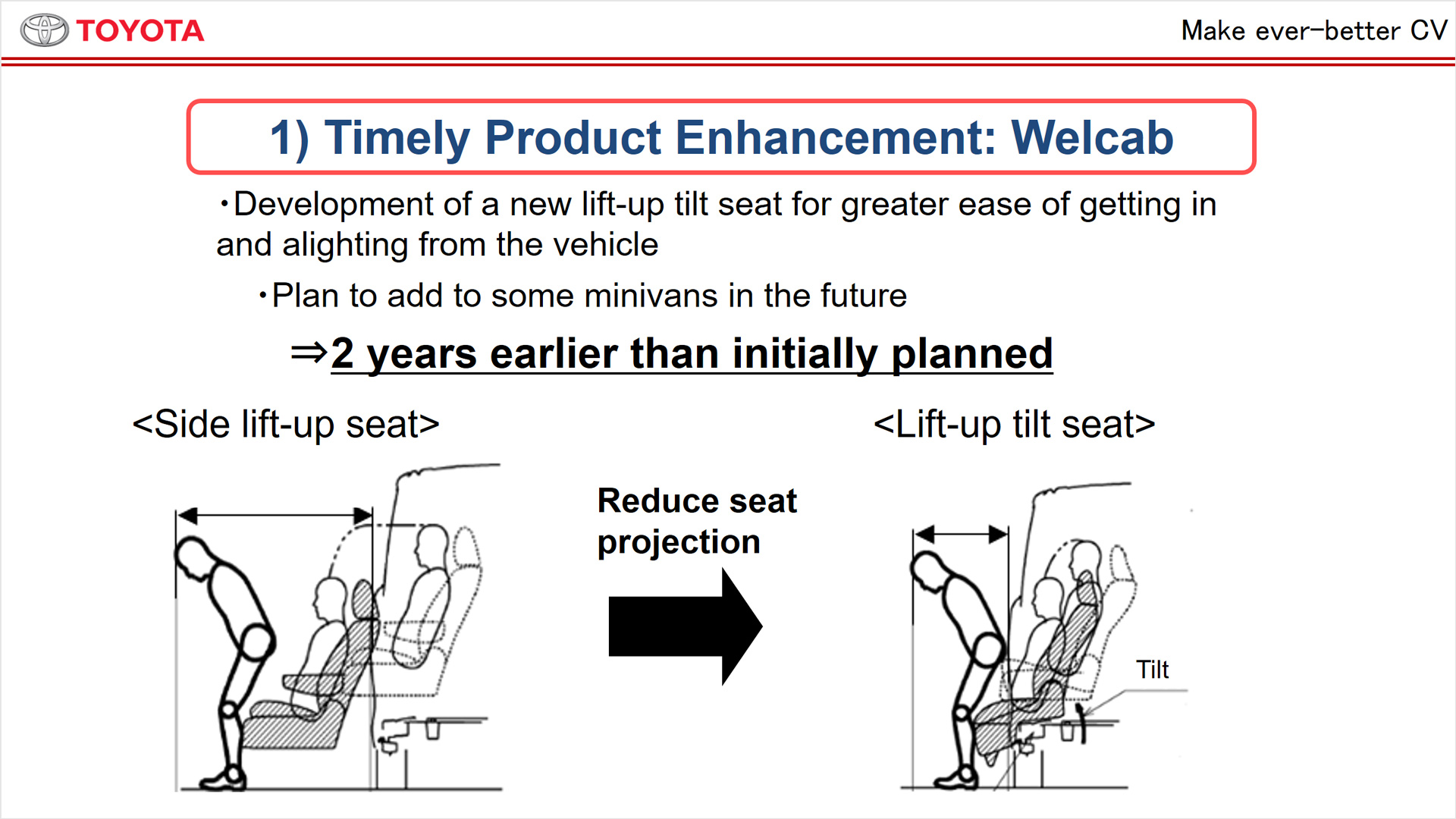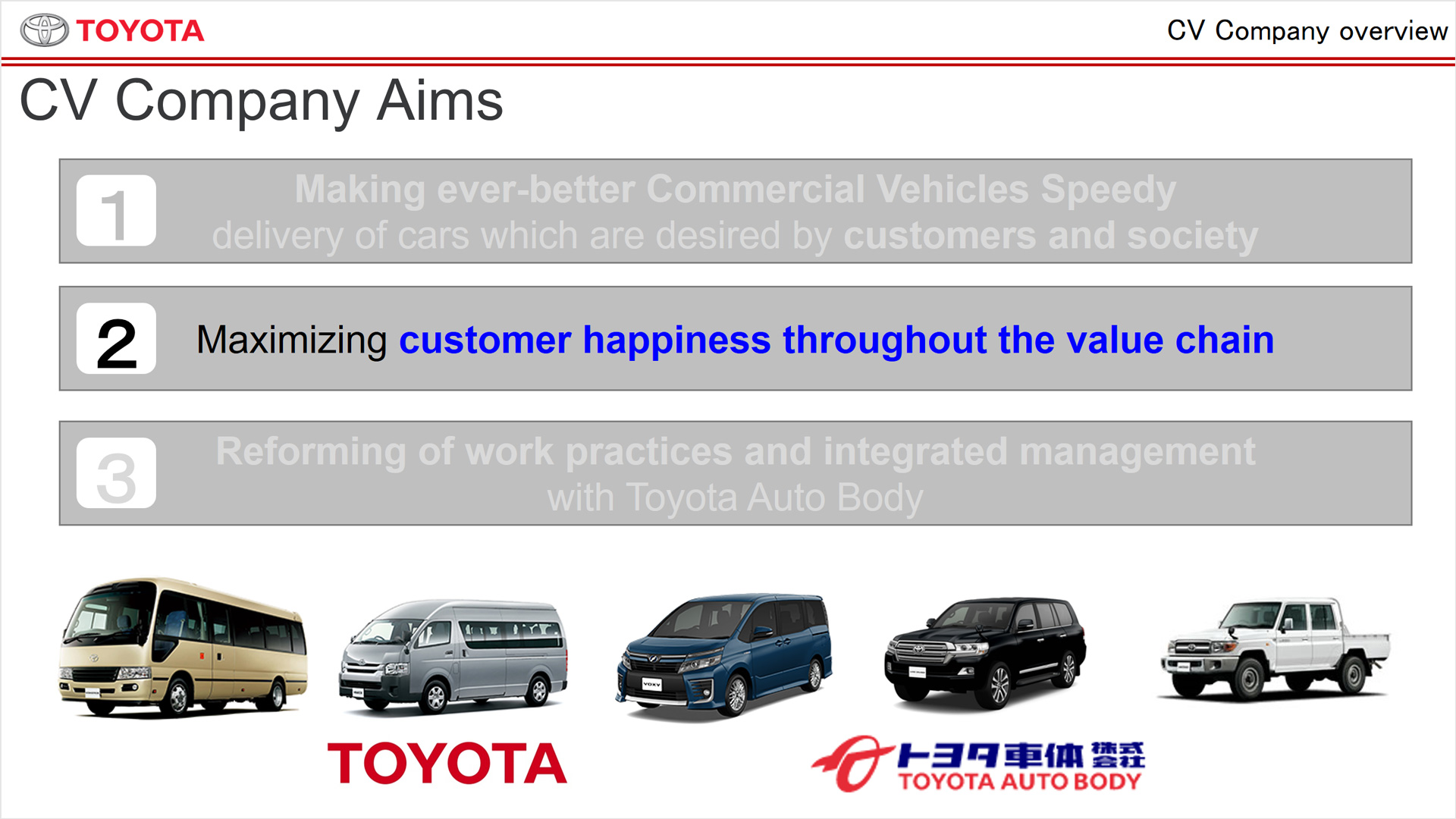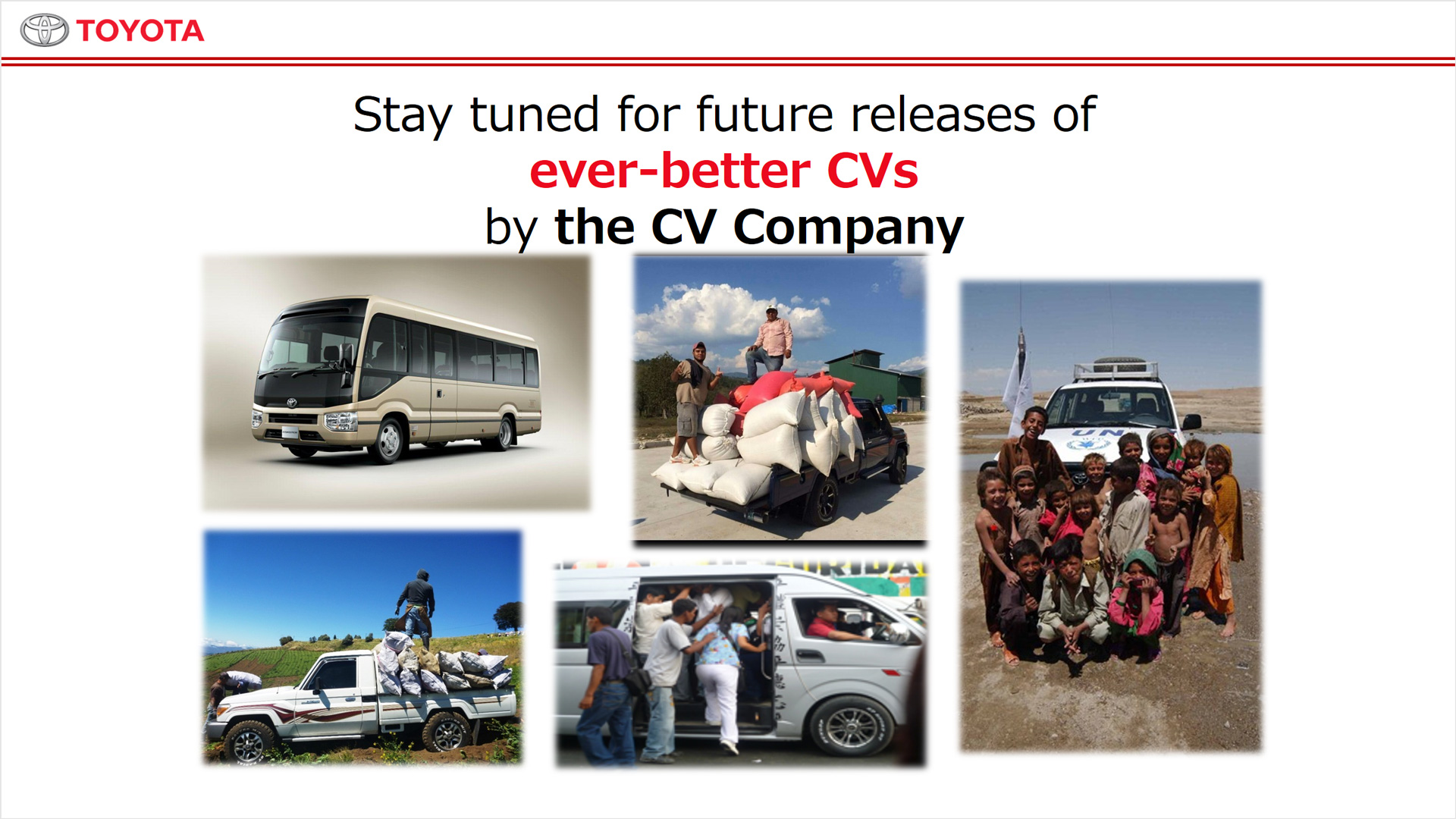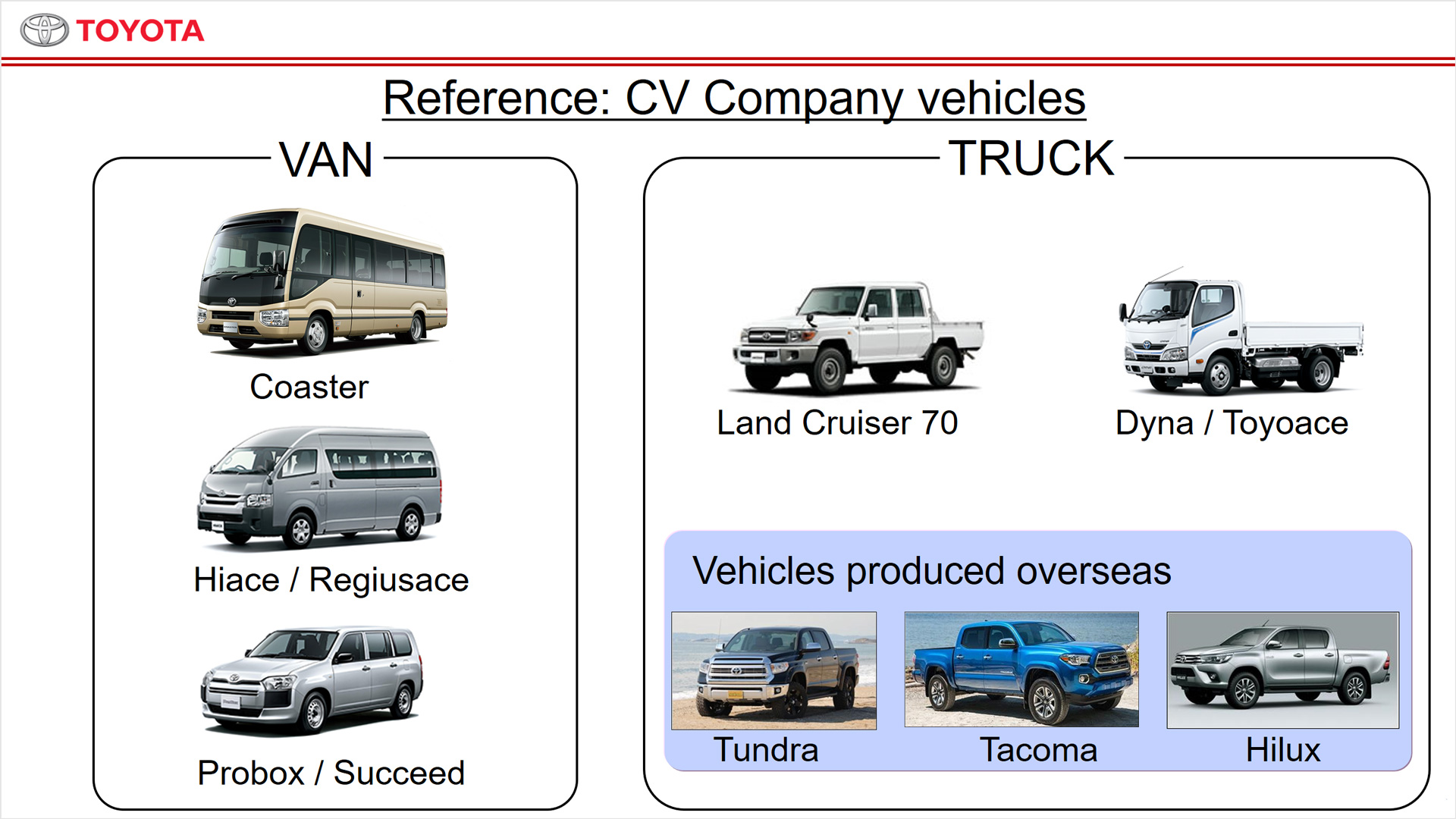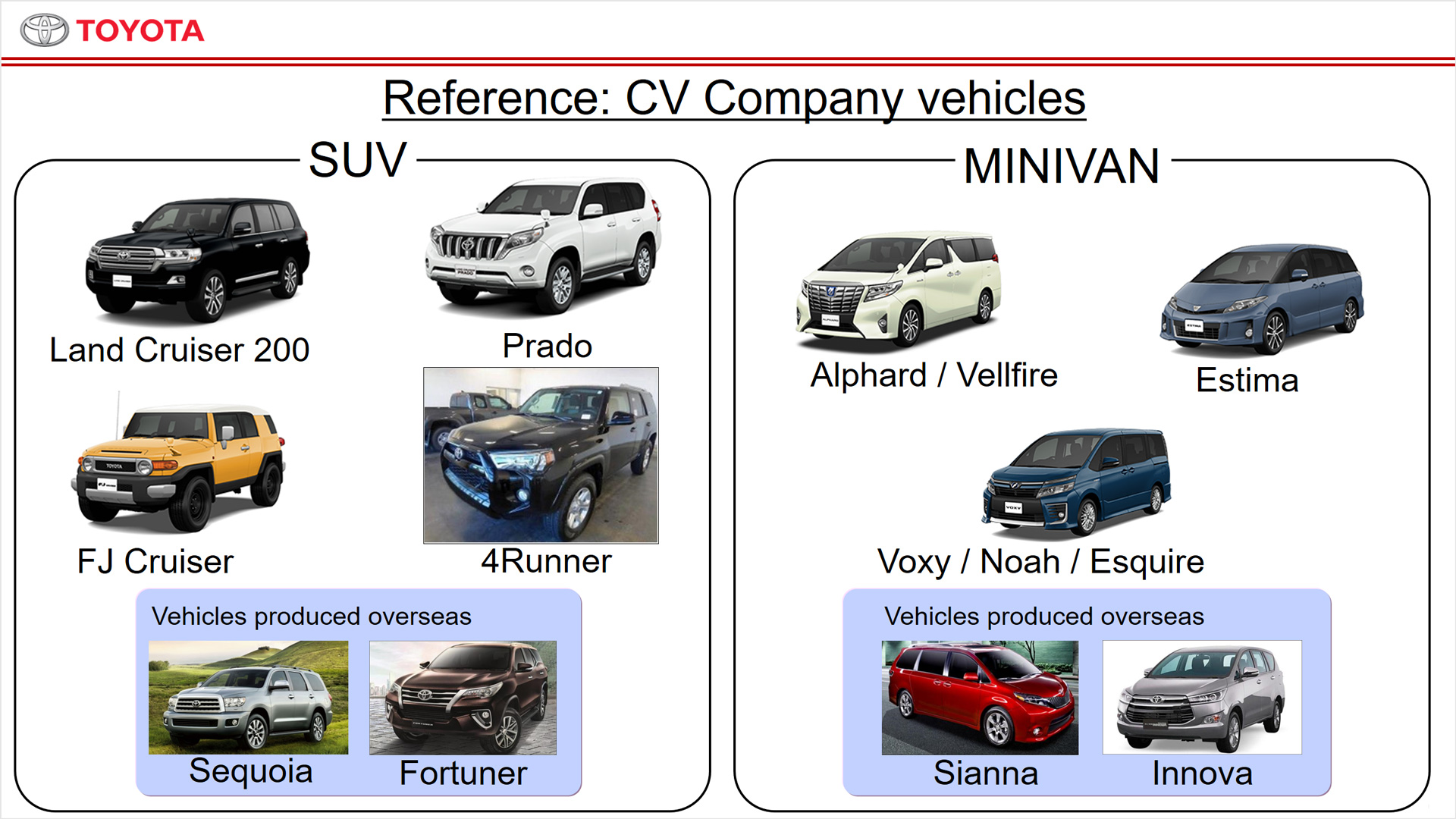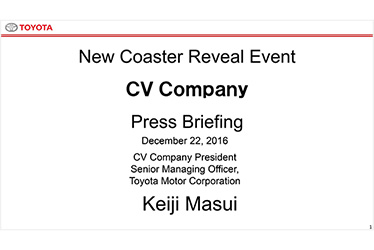Dec. 22, 2016
CV Company Briefing
At Toyota Motor Corporation, 7 product-oriented in-house companies were established in April 2016 to help speed up decision-making processes and to improve on the making of ever-better cars. On December 22, the CV company presented on its company overview at the new Coaster launch. The CV Company is responsible mainly for commercial vehicles. Please refer to the link below for more details.
Click here also for details of the new Coaster.
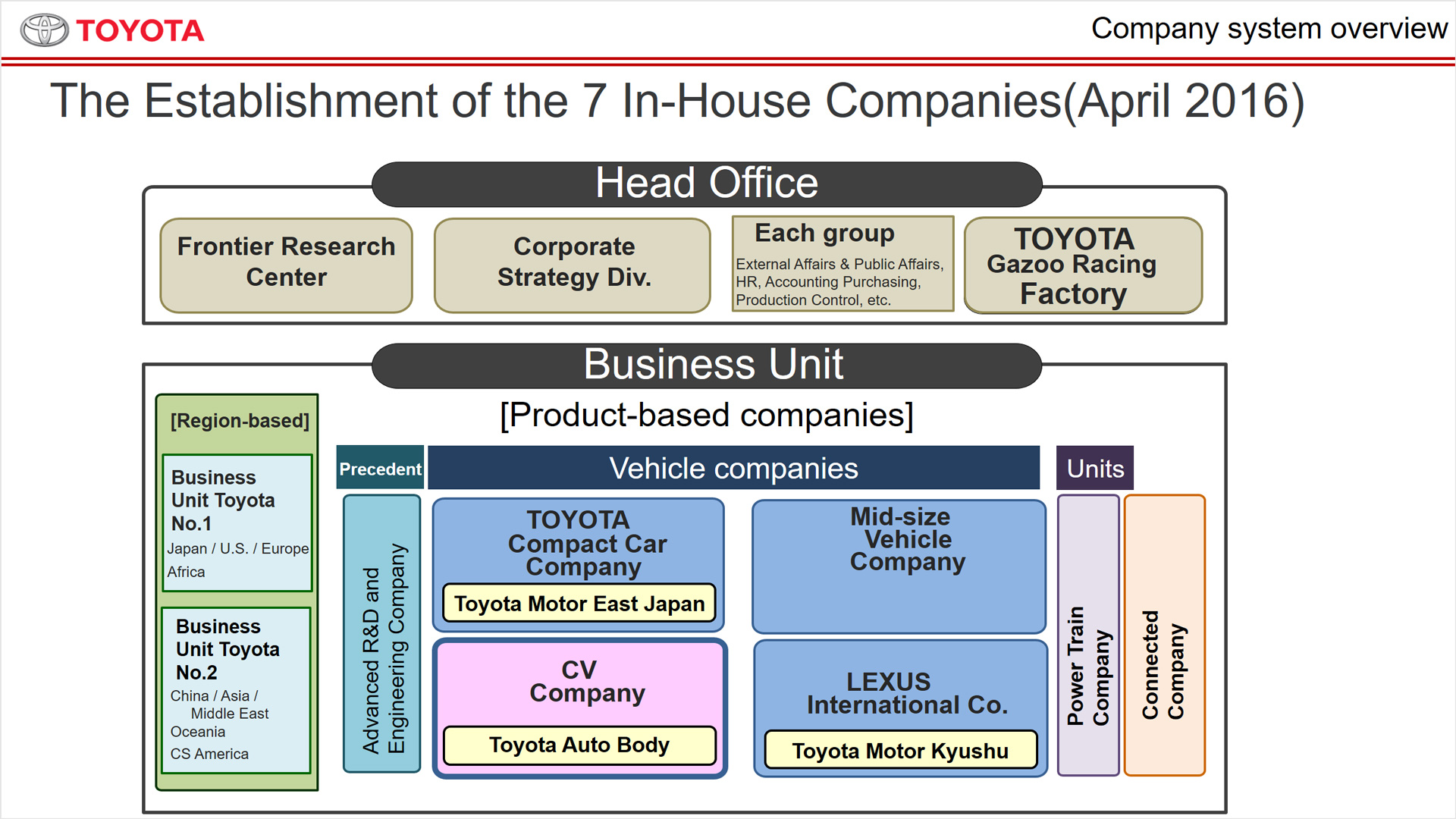
As you can see here, Toyota created a new company structure of product-based in-house companies in April of this year. The purpose is to bring together many different functions to focus on a single product so as to engage in faster and better decision-making, as well as to make better vehicles that leads to sustainable growth.
In addition to the seven product-oriented companies which have been established in April, in January of next year, Toyota will create a company that is geared toward small vehicles for emerging economies together with Daihatsu. In line with this, Toyota is preparing the entire organization for what the company deems as critical―to adapt to the changing business landscape. One such example is the establishment of the EV Business Planning Department.
In the midst of all of these, the role of the CV Company is to be responsible for a vehicle lineup which includes SUVs, trucks and minivans, alongside commercial vehicles.
In addition to being President of the CV Company, I am also President of Toyota Auto Body, a core member of the Toyota Group involved in the development and manufacturing of many Toyota commercial vehicles.
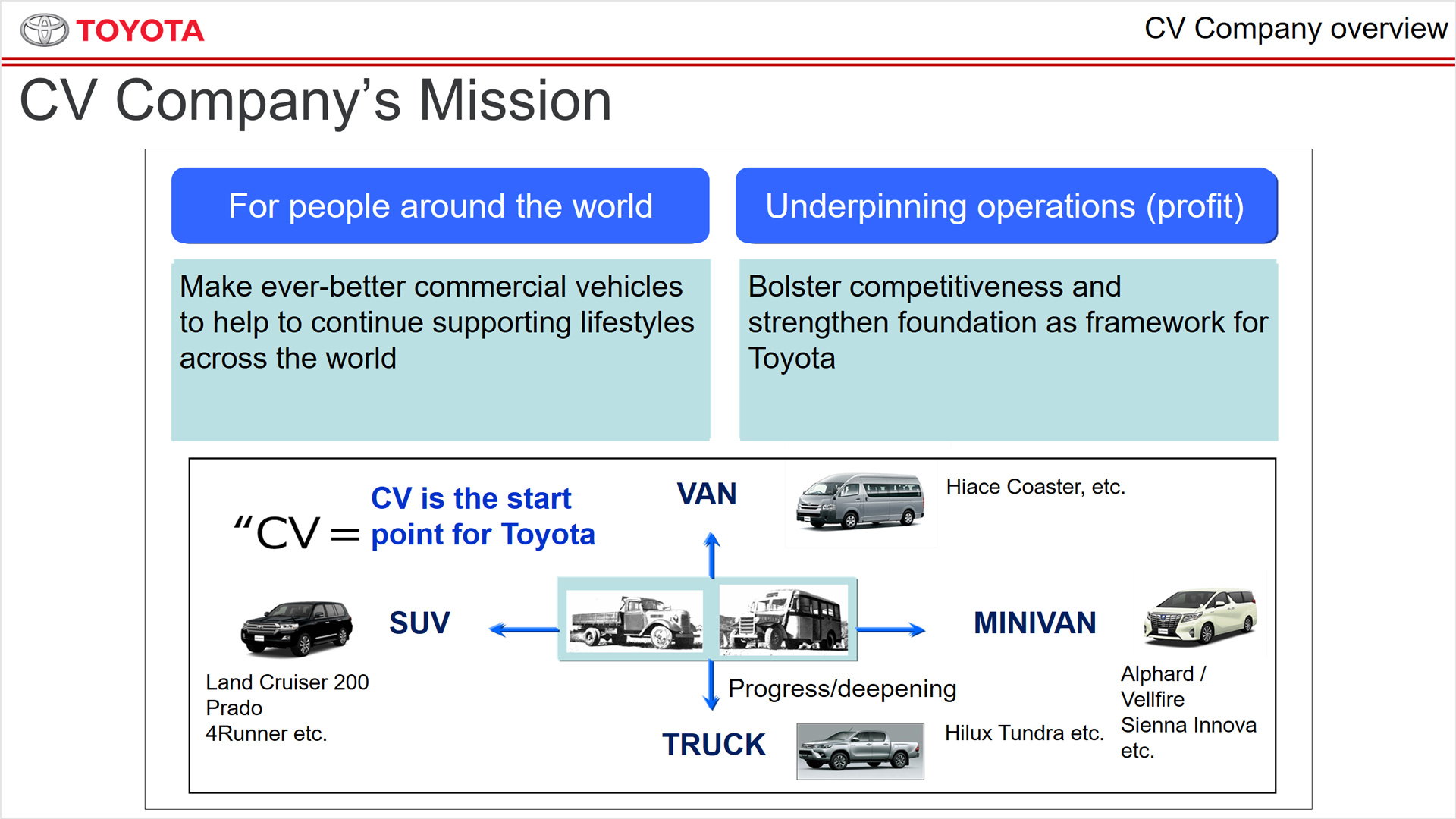
The CV Company handles vehicles which are essential to support our customers' lifestyles by helping to facilitate their distribution and personal mobility needs. That is why we endeavor to make even better commercial vehicles that will continue to help people across the globe in their daily lives, with the idea of doing things for all. This is one of our missions.
In terms of units produced, the CV Company had an output of 2.62 million vehicles in 2015, or around 30% of Toyota's total of 9.19 million vehicles. We are a linchpin of Toyota that makes a major contribution to the Group's total earnings. That's why I want us to carry out another mission of ours, which is to lay a solid foundation within our company.
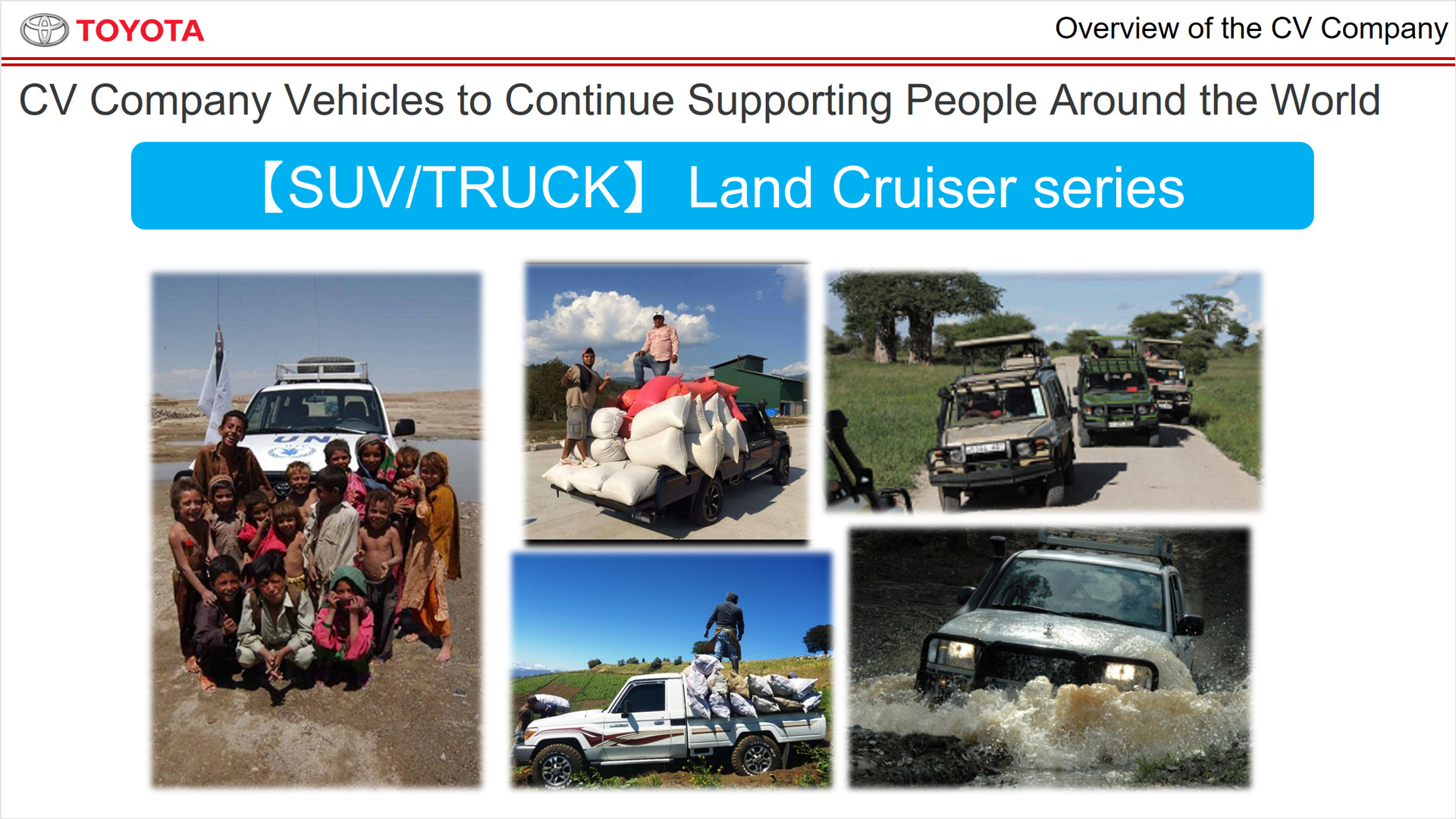
With this, I would like to introduce you to a few CV Company vehicles.
Firstly, we have the Land Cruiser, a well-known series within Toyota. With its ability to traverse across various terrains due to its impressive durability, the Land Cruiser offers off-road transportation options to our customers.

Let me go into more details about timely product enhancement.
Until now, it has been difficult for commercial vehicles to gain attention due to the overall order of priorities at Toyota. This also means we have not necessarily been able to enhance our products in a timely fashion.
In the future, we will drive development in accordance with the company's priorities, albeit with pre-requisites which we need to adhere to. It is due to the very fact that because our vehicles aid our customers in the conduct of their daily lives that I want our company to steadily enhance our products. The new Coaster which we're announcing today is the model's first complete redesign in 24 years. It will be the first vehicle representing our push for timely product enhancement.
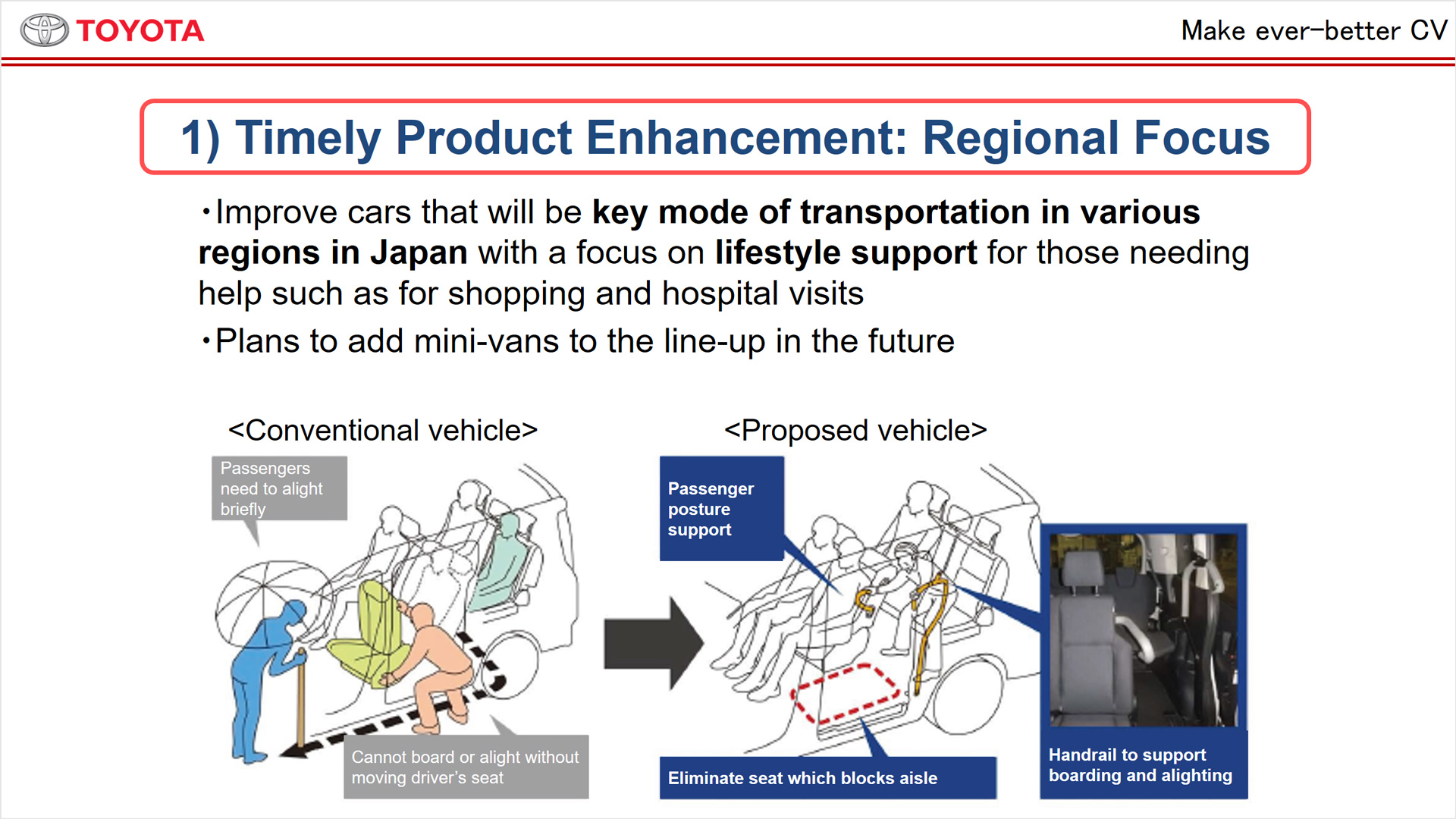
Here is an example of steady product enhancement.
Some CV Company vehicles are driven for local use to help people who have difficulty getting around their community.
That's why we developed a vehicle that is even more convenient for local use by removing some of the second row seating, and installing handrails for boarding and alighting the vehicle. We plan to install this feature in some minivans in Japan in the future.

Next is on expanding our lineup.
In the past, we have competed on certain features of individual vehicle models, but now, with our new company system, we're going to look at the wider CV Company lineup to think about what the best lineup would be, while considering the traits of each model and the roles they should play. It will be a multi-faceted lineup strategy.
Based on this lineup strategy, we will standardize vehicle frame silhouettes and develop common platforms for simultaneous improvements in terms of more appealing products and streamlined development. I believe that this will allow us to quickly expand a CV product lineup that appeals to our customers.
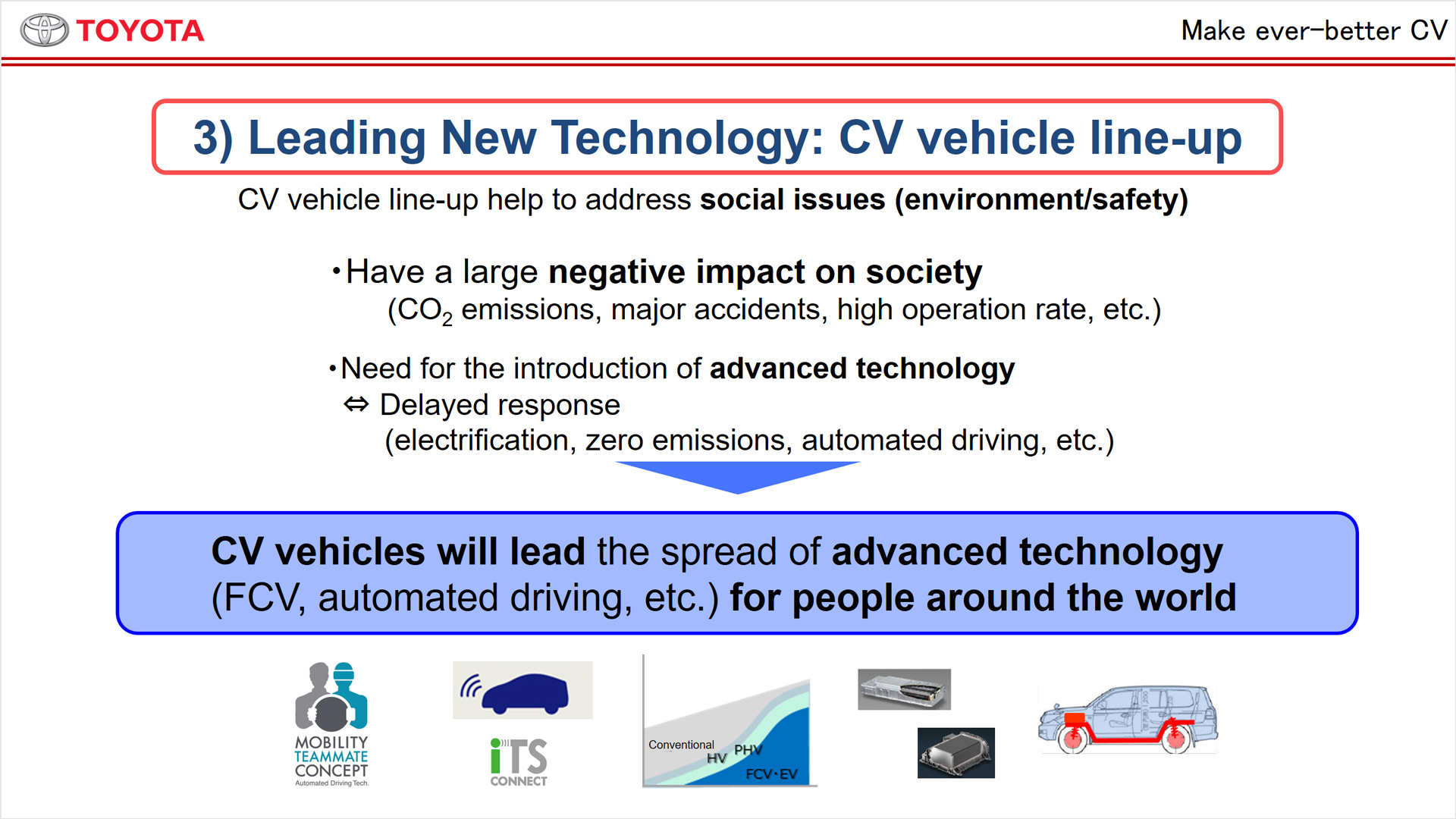
Following this, I would like to talk about taking the lead in developing new technologies.
The CV Company's vehicles have asignifcant negative impact on society in terms of the environment and safety. That is an issue we are facing. Furthermore, advanced technologies affecting production costs and vehicle structures often arrive later when it comes to commercial vehicles. These vehicles are used for practical living support and business, so we need to proactively apply technologies that help to solve public issues, such as FCVs and autonomous driving technology. One way we can do something for all is for CV vehicles to spearhead the spread of advanced technology. That is the powerful idea that guides our thinking.
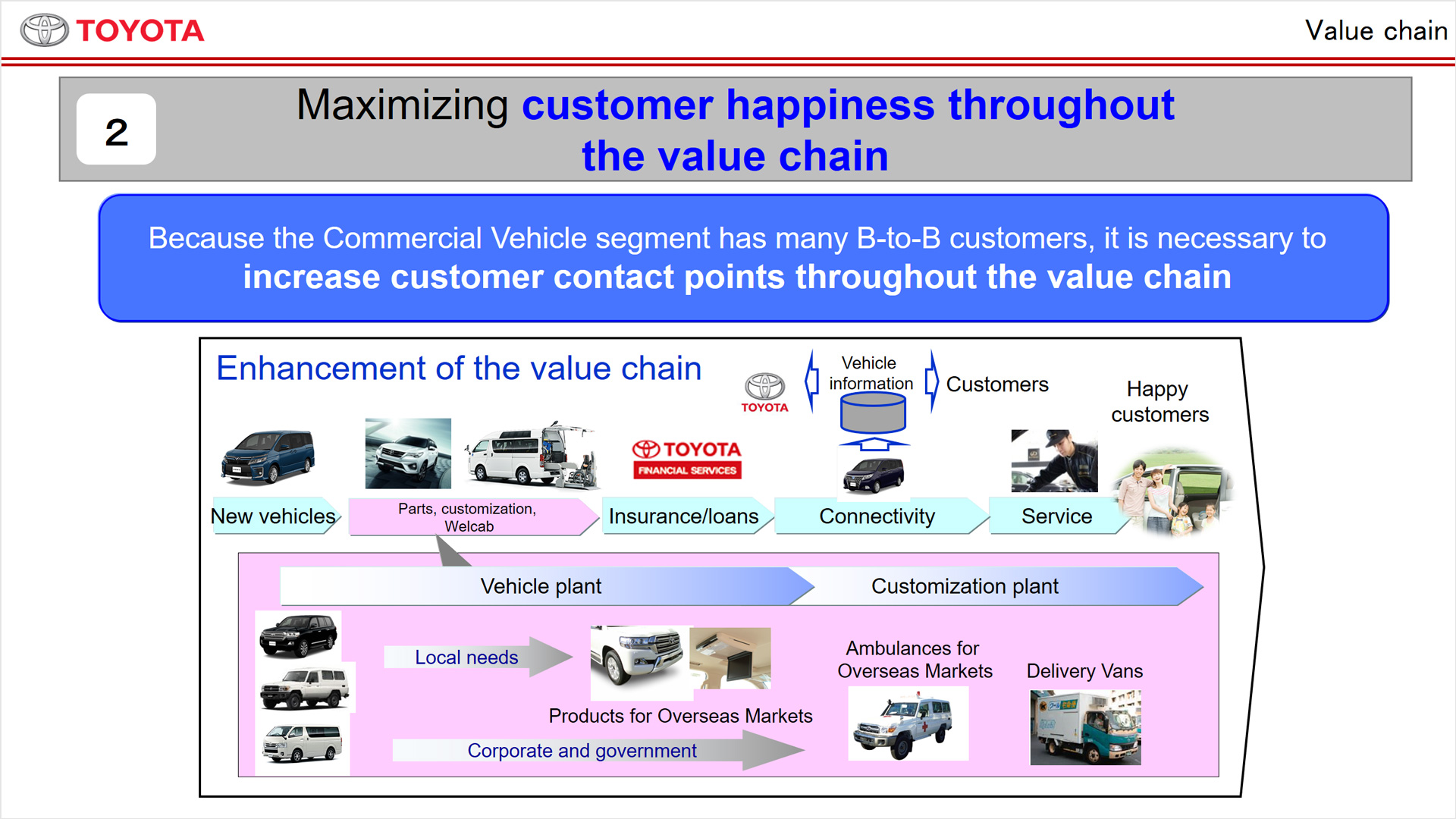
The CV Company has many B-to-B customers, so in addition to supplying new vehicles, I think we have a lot of room to further satisfy customer needs if we turn our attention to the entire value chain.
For example, if we look at a breakdown of what a customer pays for a vehicle, about 30 percent is for the purchase of the new vehicle, while the remaining 70 percent is in the value chain, which consists of parts and customization, insurance, maintenance among others.
Similarly, outside of Japan, we get requests for services beyond the sale of a vehicle in many cases, such as on operational management. That's why we want to do more than just sell vehicles. We also want to work on the intangibles within the value chain that make our customers happy.
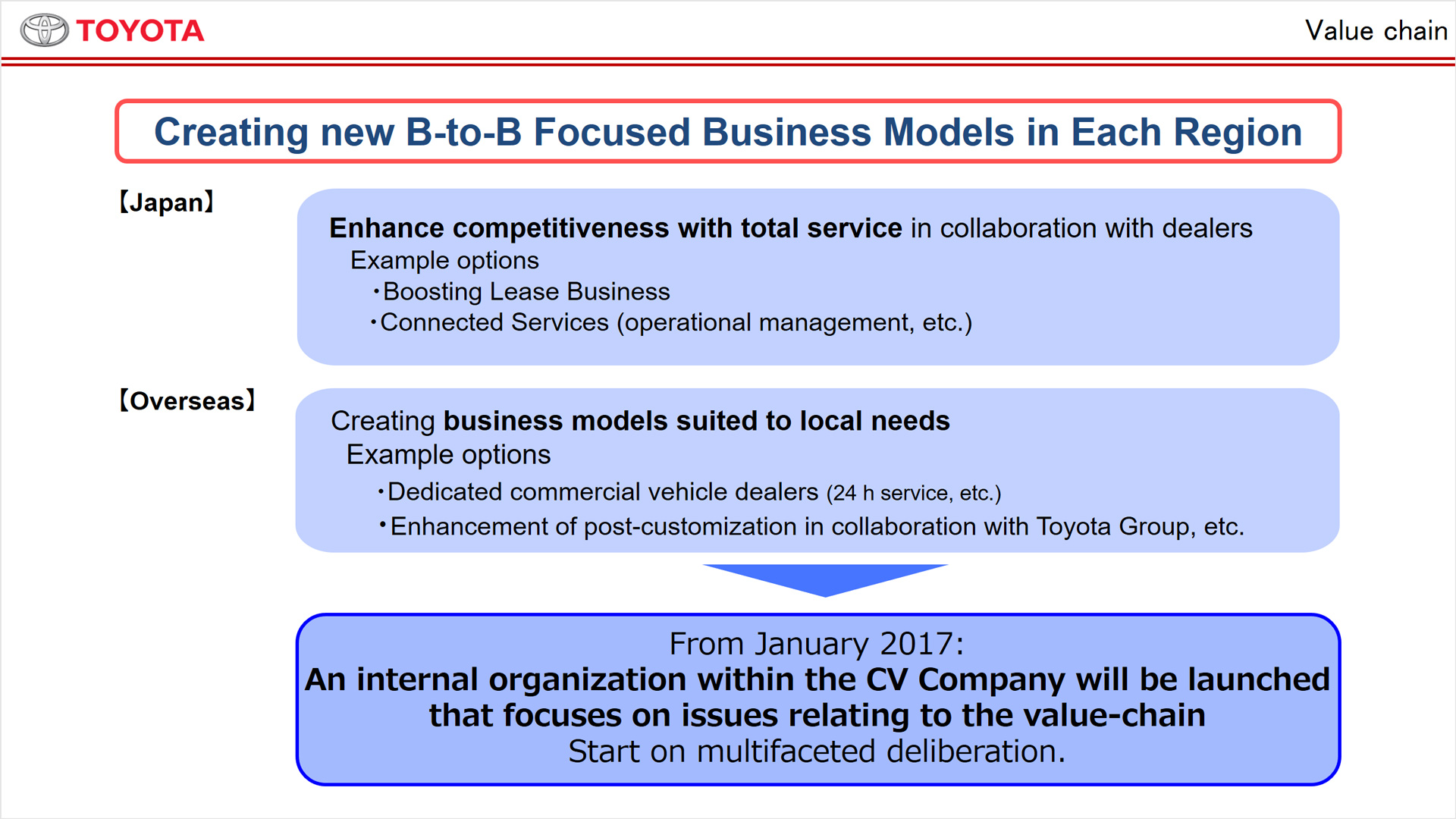
Specifically, the direction I want us to take in Japan is to partner with dealerships to enhance our total service throughout the value chain.
Overseas, the situation varies greatly between countries and regions, so, based on analyses of each country's situation, we are considering business models that suit local needs.
To drive these efforts, we are going to create an organization within the company to consider business plans that are related to the value chain.
Next year, I'd like for us to start implementing a variety of ideas and preparations as we prepare to intensify company-wide discussions that also include relevant parties from outside the company.

Our primary focus in reforming work practices is to accelerate our decision-making. First, we will use all the functions of our company together to propose and execute cross-function plans with greater alacrity.
Furthermore, I will make maximum use of the advantages provided by my role as president of Toyota Auto Body, to integrate the CV Company's administration with that of Toyota Auto Body's, thus helping to accelerate cross-company management and action.
To facilitate this acceleration, I would also like to delegate authority. This will drive the work practice reforms that are the goals of the Toyota company system, strengthen company competitiveness, and lead to continuous growth of the CV Company's products and business.

I'd like to share an example of rapid decision-making: the increased Tacoma production capacity at our Mexico plant, which had been announced in September this year.
Our traditional organization took considerable time to go from examining a plan to making a decision and executing it. In this case, we were able to decide on increased production output and were able to transition to the implementation stage in only three months' time because the CV Company took charge and worked quickly with our partners in North America.
Of course, speed isn't everything. We also made efforts to come up with various ways to hold down the cost of investments.
This is how we're working on businesses and products with the idea of creating decision-making processes on our own.
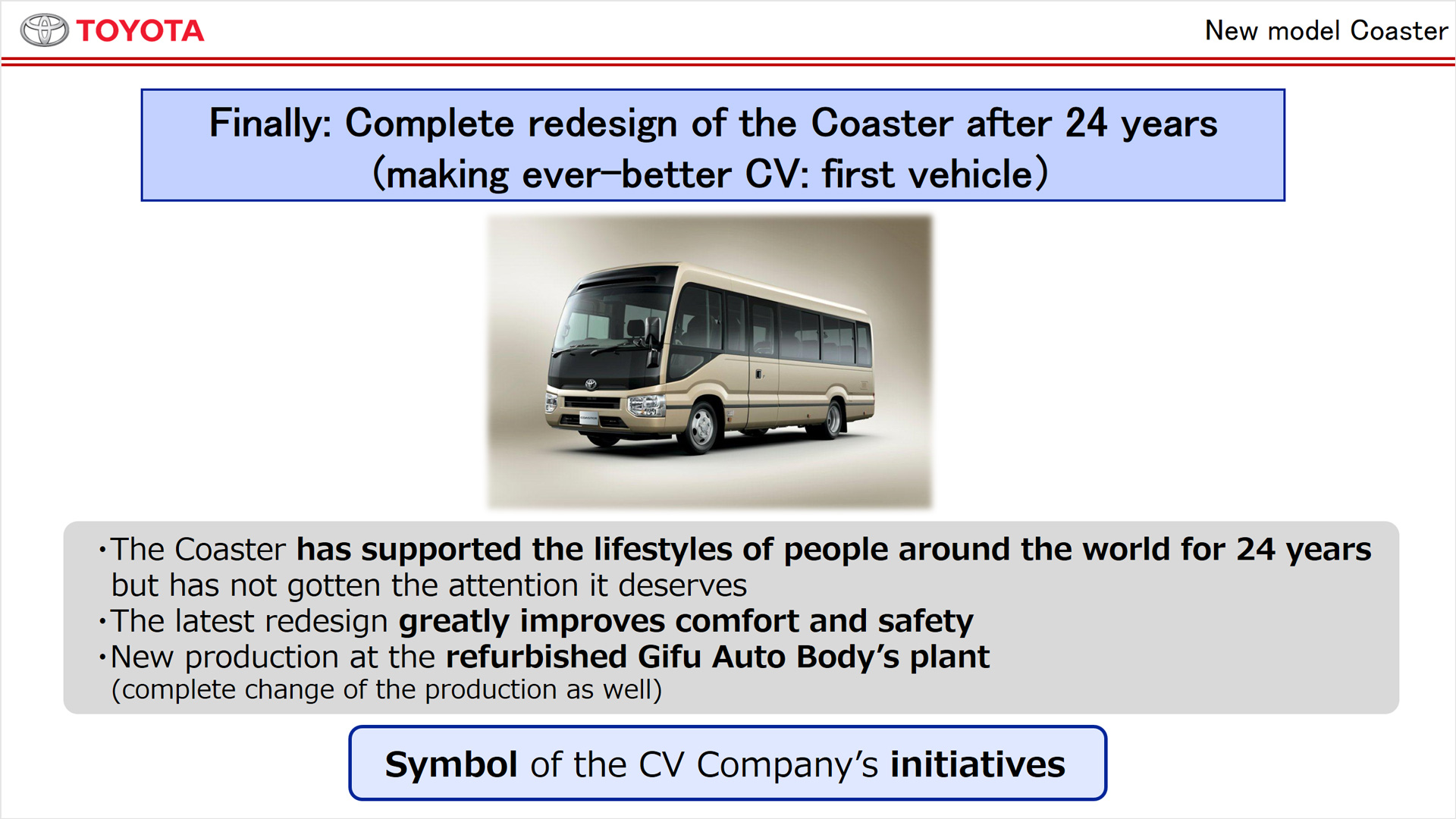
Lastly, I'd like to say a few words about the Coaster. The new Coaster is the CV Company's first complete redesign in 24 years, and the first vehicle representing our idea of making even better commercial vehicles.
Although these vehicles have been helping people in Japan and overseas about their daily lives despite the lack of recent major upgrades, various technologies have been incorporated into this latest complete redesign emphasizing huge improvements in comfort and safety.
But it's not just about the product.
For many years the Coaster was produced at Toyota Auto Body's Yoshiwara Plant, but we have taken this opportunity to transfer production to Gifu Auto Body, a member of the Toyota Auto Body Group.
We installed a new production line at Gifu Auto Body to which we added a great deal of new technology and assembly methods.
Thus, we have completely overhauled the Coaster's manufacturing process and its qualities as a product. I believe that this vehicle represents the way forward for the CV Company.




